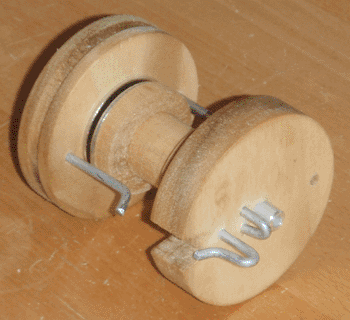
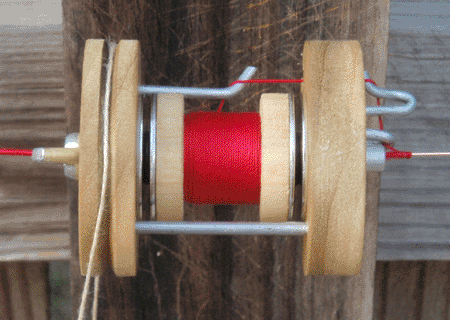
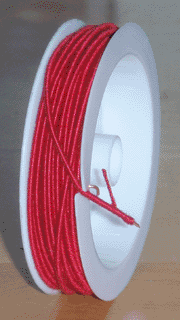
Insulated wire is fundamental to the study of electricity, but due to its ubiquitous nature it is often overlooked by experimenters (myself included) who intend to make things from scratch. However, in my recent attempts to improve the material and aesthetic foundations of my projects, I became aware of the fact that modern electrical wire is universally covered by extruded plastic. Since this is visually unappealing, and since I have lately been attempting to avoid the use of plastics altogether, I decided to build a simple tool to manufacture fiber-insulated wire as a replacement.
Natural fibers in the form of yarn can be used to insulate wire, if the yarn is wrapped in a tight spiral like the threads on a screw. Furthermore, if the yarn is sufficiently smooth and round (i.e. 3-ply or higher) this wrapping process becomes self-advancing, as each winding will naturally fall just ahead of the previous one. All that is necessary then is to build a tool which spins a spool of yarn around a wire, with proper guides and tensioning so that the yarn is wrapped tightly and without overlaps. Through experimentation I found that the most lightweight and balanced design is one in which the wire is concentric with the spool, and the results of these experiments can be seen at the top of the page.
The system of guides is straightforward; the two angled wires allow the yarn to turn corners smoothly, while the wire staple at the front constrains the yarn, pulling the spinner forward as the yarn advances on its own. The yarn tension is adjusted by the wingnut at the back, with sets of O-rings acting as compressible friction washers to allow fine-tuning. The spool and disks are made of poplar, the guides and washers are made of steel, and the hollow spindle is a section of 1/4" aluminum tube, threaded at one end to receive the wingnut. For the yarn, I found that #10 crochet yarn (3-ply cotton) is by far the most inexpensive and useful option, as it is available in a variety of colors at roughly 200 yards per dollar.
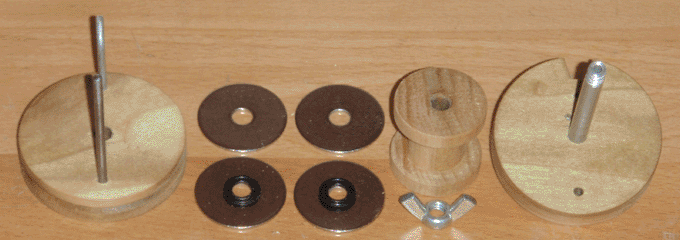
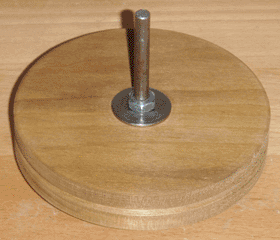
In use, the wire is pulled taut between two points and the the spinner is driven by a pulley mounted in the chuck of a hand drill, allowing for the coverage of a few feet of wire per minute. This wire can have a diameter of between 1/32" (20 AWG) and 3/32" (11 AWG), limited at the low end by the tensile strength of the wire, and at the high end by the inner diameter of the spindle. With 1/32" wire the spool carries enough yarn to insulate 20 feet at a time, with thicker wire yielding proportionally shorter lengths. Interestingly, the spinner can wrap yarn both clockwise and counter-clockwise, so it is also possible to make double-insulated wire by making two opposing passes. This provides insurance against gaps in the windings, is less likely to unravel when cut, and can be terminated by simply tying the two loose ends together, instead of the back-serving knot required for a single winding. This comes at the cost of thicker insulation, however, so it is not necessarily optimal for all applications.
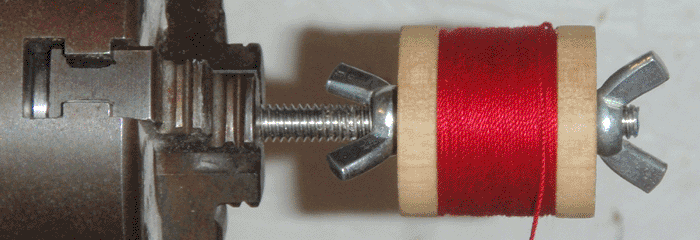
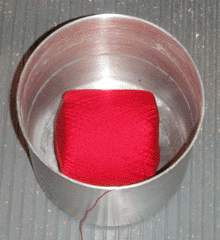
The insulated wire produced in this manner, while pleasant-looking, offers no protection against moisture; the insulation is purely mechanical. However, due to the porous nature of cotton yarn, any of the oil-based finishes I have developed previously can be used over it as the situation requires, with linseed oil paint being the most common option historically. Furthermore, I will likely spend more time in the future developing a coating specifically for wires, since no oil paint is truly waterproof, and many coatings lack the flexibility required for this application. As it stands, though, this insulated wire is entirely adequate for electronic devices intended for indoor use, and provides a visually interesting and materially simple alternative to modern wire for that purpose.